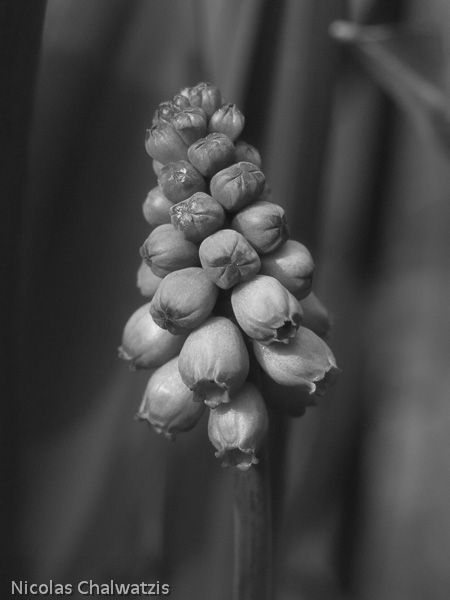Kevan et al. (2001) have pointed out, that UV-light contributes to the visual orientation of many species, including bees and other insects, but the importance is not fundamentally different from other wavelengths, e.g. blue and green light [1].
Bees and many other insects have three colour receptors in their eyes, similar to humans. However, the difference is that they do have a receptor sensitive to UV, while they are less sensitive to longer wavelengths that we see as red. In summary, their visible spectrum is shifted towards the shorter wavelengths (compared to ours).
I’ve been thinking for a while how to best visualise the colours that bees see. It seems logical to me to combine the entire spectrum that their eyes can detect, which means near UV (~340-380 nm), blue (max. 440 nm) and green (max. 540 nm). Since we cannot see UV, I’ve “pushed” these wavelengths into the RGB colour space. So UV becomes blue, blue becomes green and green becomes red.
I’m planning to illustrate and explain this approach in more detail, but for now I just want to show some flowers in “human colours”, the UV image, and the simulated “bee colour”:
Let’s start with Common Daisy (Bellis perennis) that for our eyes has white petals and yellow pollen (that doesn’t reflect blue light):
The UV-image shows that the petals do reflect part of the UV-rays, although not as strongly as visible light. The pollen doesn’t really reflect UV-rays and is therefore UV-dark:
Now, let’s remove the original red channel and combine UV with blue and green and see the result:
The Lesser celandine (Ranunculus ficaria) is an example of a yellow blossom that seems more or less evenly yellow for our eyes (a bit darker in the middle):
However, it has a strong UV pattern, since the outer petals show a strong UV reflection, while the middle of the blossom doesn’t:
And here is the image if I push UV, blue and green into the RGB colour space. This bright bee-pink is the result of the UV (bee-blue) and green (bee-red) reflection:
As a last example for today let’s have a look at the blue flowers of the Grape Hyacinth (Muscari sp.). That’s how they appear to our eyes:
The UV-image shows that the flower does reflect some UV light:
The simulated bee-colour is a mixture of UV (bee-blue) with blue (bee-green) which results in bee-turquoise, while the entrance of the flower, that we see as white, turns into bee-yellow:
What I see when I browse through my images and compare the simulated bee-colours with the image in the human colour-spectrum is, that the bee-coloured flowers stand out more against the background. This makes sense for insect-pollinated plants, since they have undergone a co-evolution with their pollinators.
The primary goal of this blog is to get in touch with people with interest in this very special topic and to start a scientific and constructive discussion. So far, I haven’t found simulated bee-colours that look similar to mine. Therefore, I’m also very interested in hints about related work.
Literature:
[1] Peter G. Kevan, Lars Chittka and Adrian G. Dyer: Limits to the Salience of Ultraviolet: Lessons from Colour Vision in Bees and Birds. The Journal of Experimental Biology 204, 2571–2580 (2001).


.jpg)






No comments:
Post a Comment